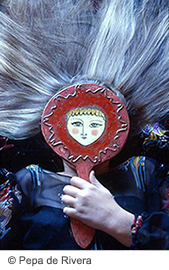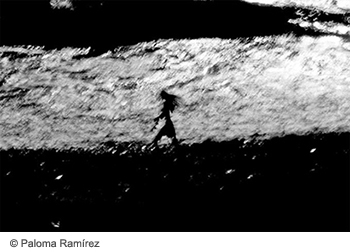Photographic Incontinence
© Guillermo Labarca

 Someone who was just back from their holidays in some Asian country told: "I've taken more than 2,000 pictures.... I have no idea what to do with them now since I cannot show them to anyone.... I don't even have time to see them myself!". I wonder if they ever stopped to contemplate the landscape or any of the temples with no viewfinder in front of their eyes. I also wonder if those whose take a picture of the dish they are having in a restaurant are more interested in telling others what they ordered than in enjoying the meal itself. I do find it surprising how people post images of birthday parties, family and friend meetings and other encounters within the social networks, where one can also find a countless number of pictures that reveal situations that were recently considered as intimate. It seems that, nowadays, there exists a compulsive need to openly show what one is doing any second.
Someone who was just back from their holidays in some Asian country told: "I've taken more than 2,000 pictures.... I have no idea what to do with them now since I cannot show them to anyone.... I don't even have time to see them myself!". I wonder if they ever stopped to contemplate the landscape or any of the temples with no viewfinder in front of their eyes. I also wonder if those whose take a picture of the dish they are having in a restaurant are more interested in telling others what they ordered than in enjoying the meal itself. I do find it surprising how people post images of birthday parties, family and friend meetings and other encounters within the social networks, where one can also find a countless number of pictures that reveal situations that were recently considered as intimate. It seems that, nowadays, there exists a compulsive need to openly show what one is doing any second.
I try to find a reason to such behaviour, both in the loss of intimacy in contemporary societies and in the development of photographic and communication digital technologies. The lack of intimacy is not the exception, in fact, such phenomenon appeared during the 20th century. Never before had humanity enjoyed that privilege, which is now quickly fading away. The loss of intimacy related to technological development is actually new. An improvement that allows everyone to have a simple camera at hand, one which does not ask a technical knowledge from the user: no testing, no developing and, besides, the images can be uploaded easily anywhere in the Internet.

 However, further than recording everyone's life, any event is photographed, specially fires, rock concerts, natural disasters, street demonstrations, vulnerable or beggarly people, wars, celebrities in public places, turistic spots such as monuments, inhabitants or quaint scenes. Huge quantities of images get collected, and in the same way, anyone becomes a photographer and makes photographic reports of any topic. No need to be supported by a media agency or press to be a reporter anymore. There exist other platforms. Power relations are shifting, same way as the musical world already has. Photographers have direct access to their audience, big or small, without the intervention of the settled entities which control the business so far.
However, further than recording everyone's life, any event is photographed, specially fires, rock concerts, natural disasters, street demonstrations, vulnerable or beggarly people, wars, celebrities in public places, turistic spots such as monuments, inhabitants or quaint scenes. Huge quantities of images get collected, and in the same way, anyone becomes a photographer and makes photographic reports of any topic. No need to be supported by a media agency or press to be a reporter anymore. There exist other platforms. Power relations are shifting, same way as the musical world already has. Photographers have direct access to their audience, big or small, without the intervention of the settled entities which control the business so far.
Other actors whose role is not still clearly defined have appeared. Instagram, for instance, the use of which implies the unchangeable and everlasting delivery of international license over one's images. Still not known the future movements such agencies will do, though they are already affecting over those who take pictures, the new photographers and many old school ones too. They all see a chance to take part in the new media. On the other hand, photography consumers like advertising agencies and press media find an easier and cheaper way to fish in this infinite ocean of images and use them for their publications and advertising campaigns.
Maybe the most interesting fact about those new platforms and styles in fashion, from a purely photographic viewpoint, is the creation of a new language and, from there, a new hierarchy: the image of a sleeping cat, a neighbour's barbecue or a group of friends having beers taken with a smartphone turns out to be more crucial that a carefully structured photographic report around any central idea. Such a subject deserves a more thorough treatment, unfortunately we have run out of room here, we'll save it for a future opportunity.
